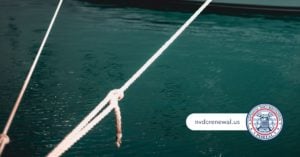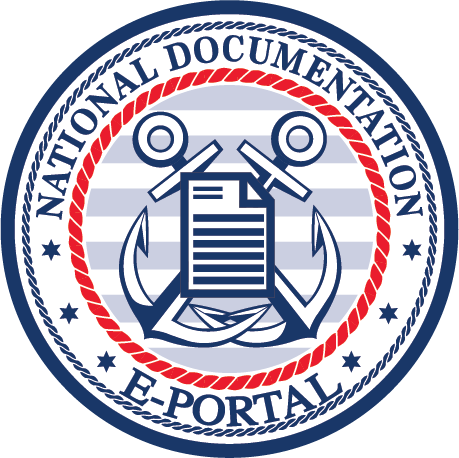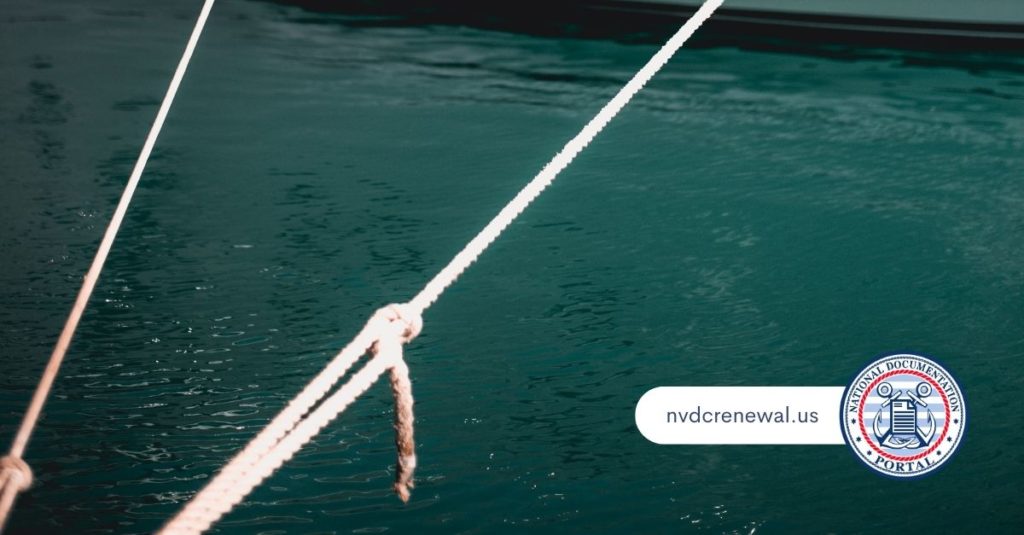As the summer season winds down, many boaters are eager to take advantage of the remaining warm weather by heading out on the water. Whether you’re wrapping up a long boating season or just squeezing in a few late-summer trips, maintaining awareness of current marine safety alerts and preparing accordingly is crucial. At the National Documentation Portal, we’re committed to supporting not just your vessel’s compliance with USCG documentation, but also your broader boating safety knowledge and readiness.
Late summer brings unique maritime conditions. From unexpected storms to increased traffic on the water, safe boating is just as important during this time of year.

Paying Attention to Current Marine Safety Alerts
The U.S. Coast Guard regularly publishes marine safety alerts to address specific hazards or emergent issues that can affect boaters nationwide. These alerts may cover mechanical failures, hazardous products, navigation concerns, or operational recommendations. By reviewing and responding to these notices, boaters can reduce their risk on the water and make safer decisions for themselves and their passengers.
While our platform does not issue or interpret these alerts, we strongly encourage users to check the Coast Guard’s Safety Alerts page regularly. Being aware of current alerts—especially those affecting your region or vessel type—can help prevent accidents before they happen.
Many of the safety alerts published by the Coast Guard contain valuable advice about gear inspections, manufacturer recalls, and procedural adjustments. If you’ve documented your vessel through our portal, you’re already committed to compliance—being responsive to safety guidance is another critical aspect of responsible boating.
The Right PFD for the Right Conditions
Personal flotation devices (PFDs) are essential on any vessel. Regardless of your vessel’s size or classification, PFDs should always be readily available, properly fitted, and approved by the authorities. While state laws may vary, federal law requires that a wearable PFD be available for each person aboard a recreational vessel.
We recommend checking the condition and fit of each life jacket before heading out. Look for signs of wear, mildew, or broken straps. Inflatable PFDs should be tested and maintained according to manufacturer instructions. Children’s life jackets must meet specific sizing and safety requirements.
Late summer outings can involve high winds and changing water conditions. A properly maintained PFD can save lives in an emergency. While we help facilitate your compliance through documentation, staying safe on the water also means ensuring every required piece of gear is functional and accessible.
Beyond PFDs: What to Include on Board
Every vessel, whether it’s USCG documented or not, should carry a full inventory of safety gear. While the required equipment may vary by vessel size and classification, common recommendations include:
- Visual distress signals (flares, signal mirrors, flags)
- Fire extinguishers appropriate for vessel size and type
- Sound-producing devices such as whistles or horns
- Navigation lights for nighttime or low-visibility operation
- First-aid kits tailored to your passengers and destination
- Anchor and line
- Bilge pump or bailer
- Tools and spare parts for basic repairs
That’s just some of what you may need. You’d rather have too much than not have something you need in an emergency.
Regularly inspecting your equipment and replacing expired or damaged items is one of the simplest ways to improve safety. While we support your documentation needs, we encourage boaters to take the time to build a safety culture aboard their vessel, especially during high-traffic late summer months.
Common Boating Mistakes That Increase Risk
Even experienced boaters sometimes make preventable errors, especially when rushing to take advantage of the last few weeks of the season. Yes, it can seem like a time to fit in “one last party,” “an end of summer bash,” etc. But, you should always avoid:
- Operating under the influence of alcohol or drugs
- Allowing passengers to sit on gunwales or ride outside designated seating areas while underway
- Ignoring the weather forecast or attempting to “outrun” a storm
- Failing to inform others of your destination and return time
- Overloading the vessel with passengers or gear beyond its rated capacity
- Skipping pre-departure checks, especially for engine condition, fuel levels, and radio function
Even if your vessel is properly documented, you are still subject to safety regulations. Avoiding these behaviors protects your passengers and helps preserve your vessel’s eligibility for continued federal documentation.
Writing and Sharing a Float Plan: Why Every Boater Should File One
One of the most important steps any boater can take—especially when heading out alone or venturing far from shore—is to file a float plan. A float plan is a written summary of your trip shared with a trusted person who can alert authorities if you don’t return on time.
Your float plan should include:
- Departure date and estimated return time
- Launch location and intended route
- Names and contact info for everyone aboard
- Description of the vessel (including name, Official Number, and distinguishing features)
- Emergency contacts and medical concerns
Keeping others informed enhances safety and enables faster search and rescue efforts if needed. The more you include in a float plan, the better.
Maintaining Vessel Documentation and Emergency Preparedness
At the National Documentation Portal, we can help you apply for, renew, and manage your U.S. Coast Guard vessel documentation through a secure, mobile-optimized platform. While documentation may seem like an administrative process, it also plays a role in boating safety.
For example, if your vessel is involved in an emergency, having updated, accurate federal documentation helps responders identify the vessel more easily. Your vessel’s Official Number, hailing port, and dimensions are all part of the public record and can be referenced during a search or inspection.
Our team provides guided assistance through the documentation process, helping you avoid errors and delays. We also offer rush processing for many forms, so your documentation stays current even on a tight timeline.
Keeping your vessel in compliance is one step in a broader commitment to maritime responsibility. When paired with the right equipment and safe boating practices, it ensures a stronger safety foundation for everyone on board. You can go through our site and find all of the documentation you’ll need year round.

